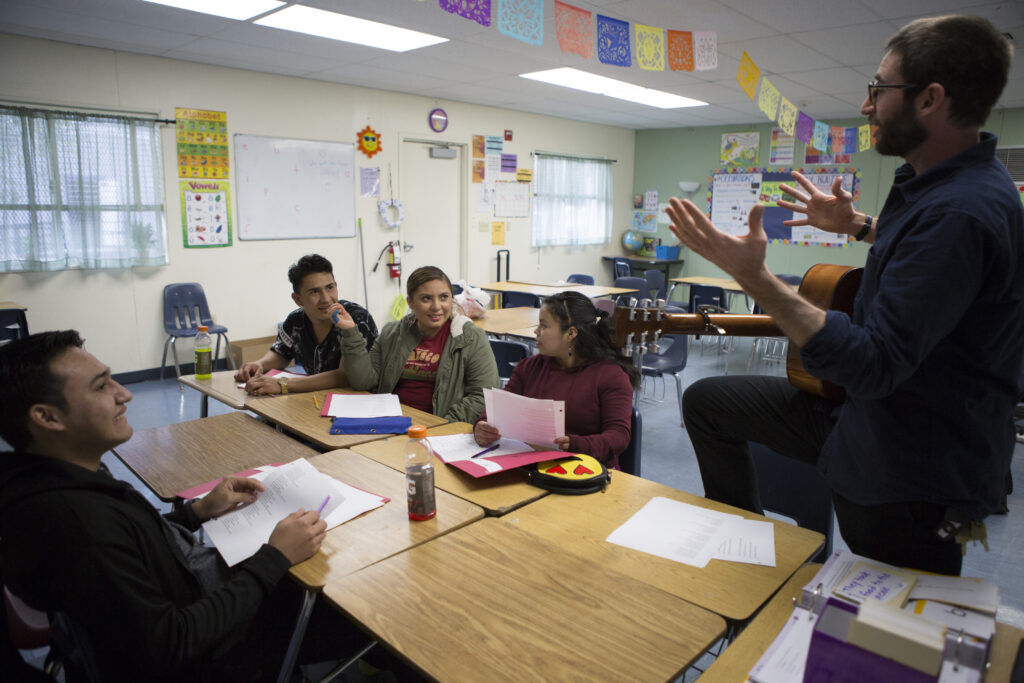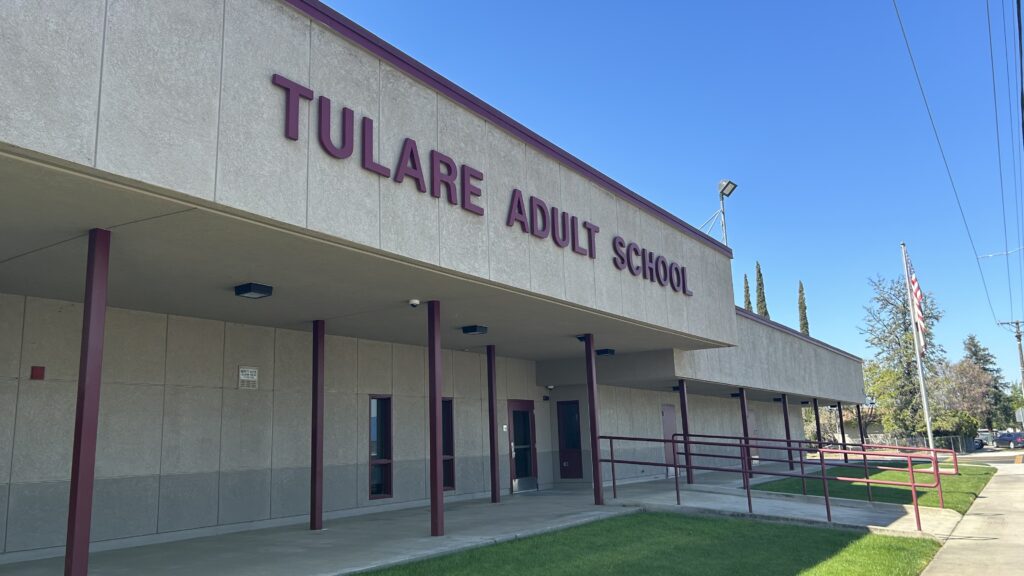
Credit: Allison Shelley for American Education
Four-year-olds are crying, putting their heads on their desks or simply refusing to answer the questions during an English proficiency test they’re required to take in transitional kindergarten.
The initial English Language Proficiency Assessment for California (ELPAC) is used to determine whether new students will be designated English learners. Under current law, the test must be given to all students whose parents speak another language at home within the first 30 days of enrollment in kindergarten through 12th grade. The test measures proficiency in four domains — listening, speaking, reading and writing in English.
The test is different for each grade. But since transitional kindergarten, often referred to as TK, is classified as the first year of a two-year kindergarten program, and not as a separate grade, schools have had to administer the test to students as young as 4 years old.
School district staff and advocates for English learners and young children say the test was not designed for 4-year-olds, may not be accurate for assessing language acquisition and may misidentify children as English learners when they are simply too young to answer questions correctly.
“We’re assessing children on reading and writing when we know that children that are young 4-year-olds are not reading and writing,” said Carolyne Crolotte, director of dual language learner programs of Early Edge California, a nonprofit organization that advocates for early education.
A new bill, Assembly Bill 2268, introduced by Assemblymember Al Muratsuchi, D-Torrance, would exempt transitional kindergartners from taking the test until they enter kindergarten.
Brett Loring, student services coordinator for Vallecito Union School District, a tiny district in the Sierra Nevada foothills of Calaveras County, said giving the ELPAC to a transitional kindergartner was “probably the most frustrating test administration I’ve ever given.”
Loring said the 4-year-old spoke Spanish at home, but he had seen that she understood some English in the classroom. Still, she was intimidated by having to leave her classroom to take the test.
After a few questions, the child said “No want to. No more,” crossed her arms and put her head down on the table.
“Why are we making kids do this?” Loring asked. “Let them develop in the TK year, get them used to the classroom, get them used to socializing. That’s the purpose of TK. It’s really a developmental year. Don’t throw this heavy test on them and expect that you’re going to get good results.”
Concerns have grown as transitional kindergarten is being expanded to all 4-year-olds, meaning younger children are taking the test each year. This school year, children as young as 4 years and 4 months were eligible to enter transitional kindergarten. By 2025, all children who turn 4 years old by Sept. 1 will be eligible.
“Why are we making kids do this? Let them develop in the TK year, get them used to the classroom, get them used to socializing. That’s the purpose of TK.”
Brett Loring, student services coordinator, Vallecito Union School District
The English proficiency test for kindergartners, which is also administered to transitional kindergartners, requires students to read and write simple words like “cat”, “pan” and “dip”, and identify the first letters in words, based on their sounds.
“My experience is ELPAC is very challenging for all kinder and TK students,” said Bernadette Zermeño, multilingual specialist at Oakland Unified School District. “Even if kids were monolingual and only speaking English, it would still be a very hard exam.”
Proponents of the bill said districts should instead use the home language survey, observations by teachers and conversations with families to assess what language help transitional kindergartners need. This would be similar to how school districts and other state-subsidized providers assess students enrolled in preschool programs.
Muratsuchi said he does not believe that students who are English learners could fall through the cracks if not tested in transitional kindergarten.
“All of these children are going to be assessed in kindergarten, so I’m confident that those who really do need the support will be properly identified in kindergarten, but in the meantime, we want to make sure we’re not over-identifying students,” Muratsuchi said.
The state funding formula gives districts more funding based on how many students are English learners, low-income, homeless or in foster care, so this bill could potentially cost districts some funding, but Muratsuchi and proponents of the bill said the loss of funding would be minimal.
“I think more important than funding is making sure that we’re serving our students well with developmentally appropriate assessments,” Muratsuchi said. “We don’t want kids to be having meltdowns over tests that are not appropriate for their age.”
Crolotte said if students are misidentified as English learners when they actually speak English, resources could be allocated for children that don’t need English language development services.
In addition, Crolotte said she’s worried students could be identified as English learners “and then get in the hamster wheel and not be able to get out of EL status.” Once identified as English learners, students must take the ELPAC every year until their test results, both on the ELPAC and on academic English language arts tests, show they are proficient in English. Some advocates believe many districts have set the bar too high for students to show they are fluent in English.
Crolotte said that Early Edge California has been researching other ways to test young children, including how other states assess young students. She pointed out that Illinois and Virginia only assess English skills in listening and speaking during the first semester of kindergarten, since many children have not yet learned to read or write. Both states wait to begin testing reading and writing skills until the second semester of kindergarten.














